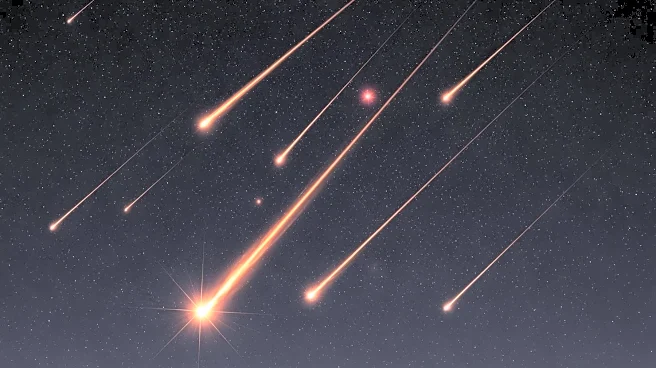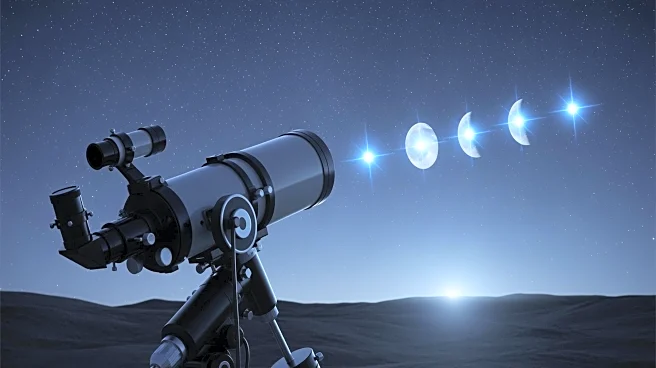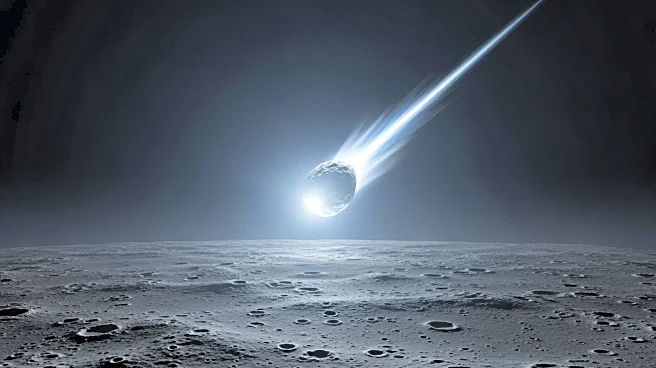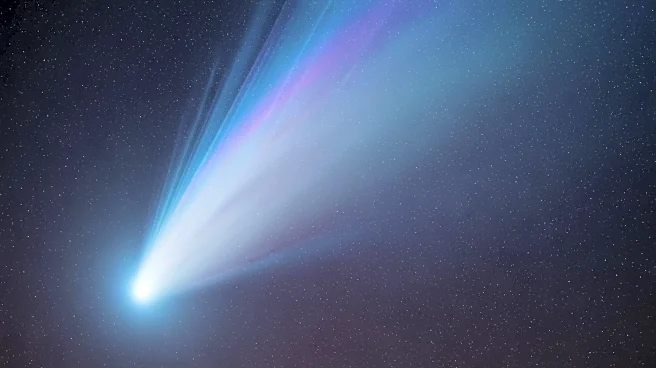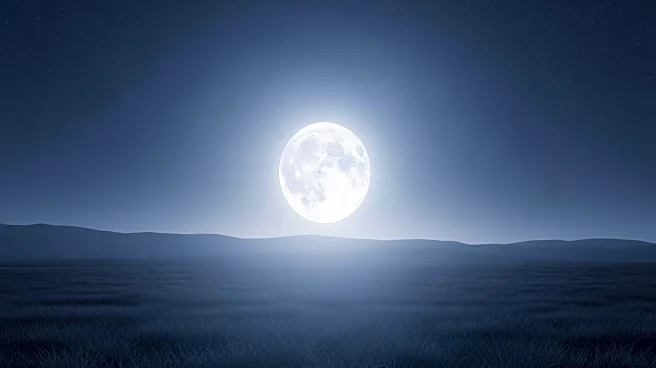What's Happening?
Two asteroids struck the moon on October 30 and November 1, creating bright flashes of light captured by Japanese astronomer Daichi Fujii. The moon's lack of atmosphere allows objects to impact its surface at high speeds, resulting in bursts of light and heat.
The first asteroid, weighing approximately 0.4 lbs, created a 10-foot-wide crater. Fujii's observations suggest the asteroids originated from the Taurus Southern Meteor Shower or Northern Meteor Shower, which peaked over Halloween weekend.
Why It's Important?
These asteroid impacts on the moon highlight the ongoing interactions between celestial bodies and the potential for significant geological changes on the lunar surface. Understanding these impacts can provide insights into the moon's history and its role in the solar system. The observations by Daichi Fujii contribute to the broader scientific understanding of meteor showers and their effects on celestial bodies, which can inform future lunar exploration and research.
What's Next?
Further analysis of the craters formed by these asteroid impacts may provide more information on the composition and behavior of meteoroids. Scientists may continue to monitor meteor showers and their potential impacts on the moon, contributing to ongoing research in planetary science. The data collected by astronomers like Daichi Fujii could be used to enhance predictive models for future celestial events.
Beyond the Headlines
The impacts on the moon serve as a reminder of the dynamic nature of our solar system and the potential risks posed by space debris. This could lead to discussions on the importance of monitoring and mitigating the effects of meteoroids on both the moon and Earth. The observations may also inspire public interest in astronomy and the study of celestial phenomena.




